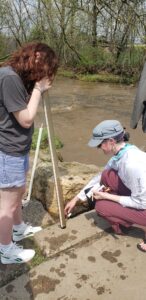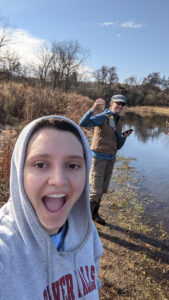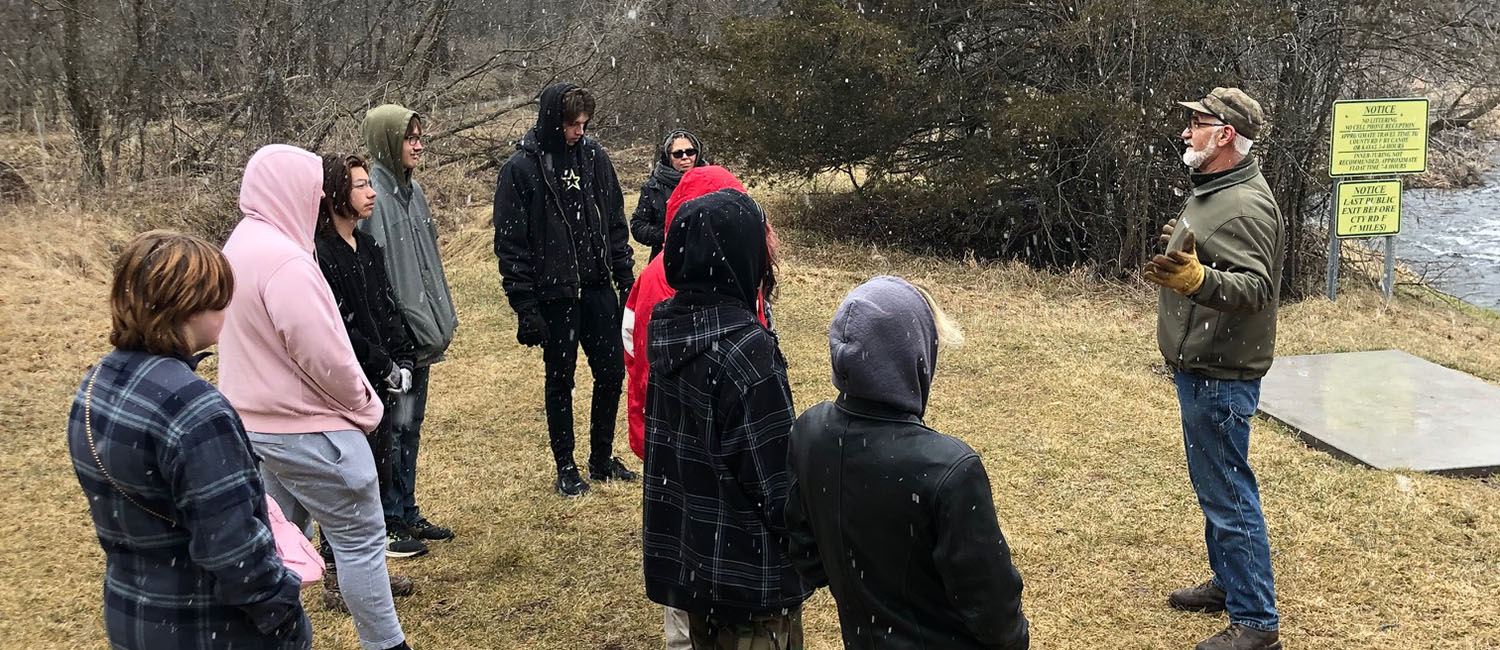By Heidi Jeter, Freshwater Collaborative
Offering 22 miles of world-class trout fishing and other recreational activities, the beloved Kinnickinnic River runs through the city of River Falls and the UW-River Falls campus. The community and the campus are invested in its health.
So, it was no surprise the Youth Water Stewards pilot program, funded by the Freshwater Collaborative of Wisconsin, received a positive response from high school participants and community members.
The program was envisioned and led by Tovah Flygare, lecturer and sustainability specialist at UW-Fiver Falls, who is passionate about connecting people to water. Though not a scientist herself, she believes anyone can care for their local watershed.
Flygare worked closely with educators at Renaissance Charter Academy, a partner of the River Falls High School focused on individualized learning with support for student success. Many students express feelings of eco-anxiety and disconnectedness from their community. The goal was to help them to deepen their understanding of water science, future potential professions, and their community.
The pilot program engaged high schoolers in water science through basic water monitoring, data analysis and stewardship. Students also connected with university professors and students, local government and business representatives, and indigenous teachers.
During their coursework, students created or improved rain gardens, assisted in local erosion control projects, completed water monitoring projects, and learned about aspects of healthy water, including learning from indigenous teachers about species of vital importance to regional food and culture, such as wild rice.

“The outdoors experience for the entire pilot project was framed around field trips, hands-on learning and service-learning opportunities,” she says. “Every field trip seemed to be very positively received.”
In fact, the pilot program received such a positive reaction that the faculty received in-kind donations of time and expertise from the local Trout Unlimited chapter, the Kinnickinnic River Land Trust, and the city of River Falls.
The original funding was for one year, but because of the in-kind donations and the ability to leverage equipment used for another UW-River Falls project — the DAM Crew, which is also funded by the Freshwater Collaborative — Flygare was able to run the pilot for two years. Twenty-five high school students enrolled in the participating courses, and the field trips and speaker events were open to the entire high school and to UW-River Falls students.
The grant also supported two paid undergraduate positions to help with activities. Another four undergraduates volunteered their time.
Amber Rappl, who is majoring in biology and biotechnology at UW-River Falls, was the lead undergraduate mentor and educator. She facilitated educational workshops, organized field trips to local waterways, coordinated hands-on conservation projects, and provided guidance and support to students as they developed their understanding of water issues and implemented solutions in their communities.

“My favorite part of this experience was seeing high school students get visibly excited about doing science,” she says. “Working closely with them, I witnessed their enthusiasm and passion for environmental stewardship grow, and I am proud to have played a role in fostering their commitment to protecting our freshwater resources.”
Another undergraduate helped the students create a rain garden around a city drain, and recent graduates who now work for the city led a service-learning project to address erosion.
Flygare says having undergraduate mentors was powerful. They shared what it was like to be a college student and made connections between the science and how students could use it to address real-world environmental problems.
“It was nice for the students to see a path from high school to college to a professional career working in water,” she says. “There were some ah-ha moments that were pretty special.”

